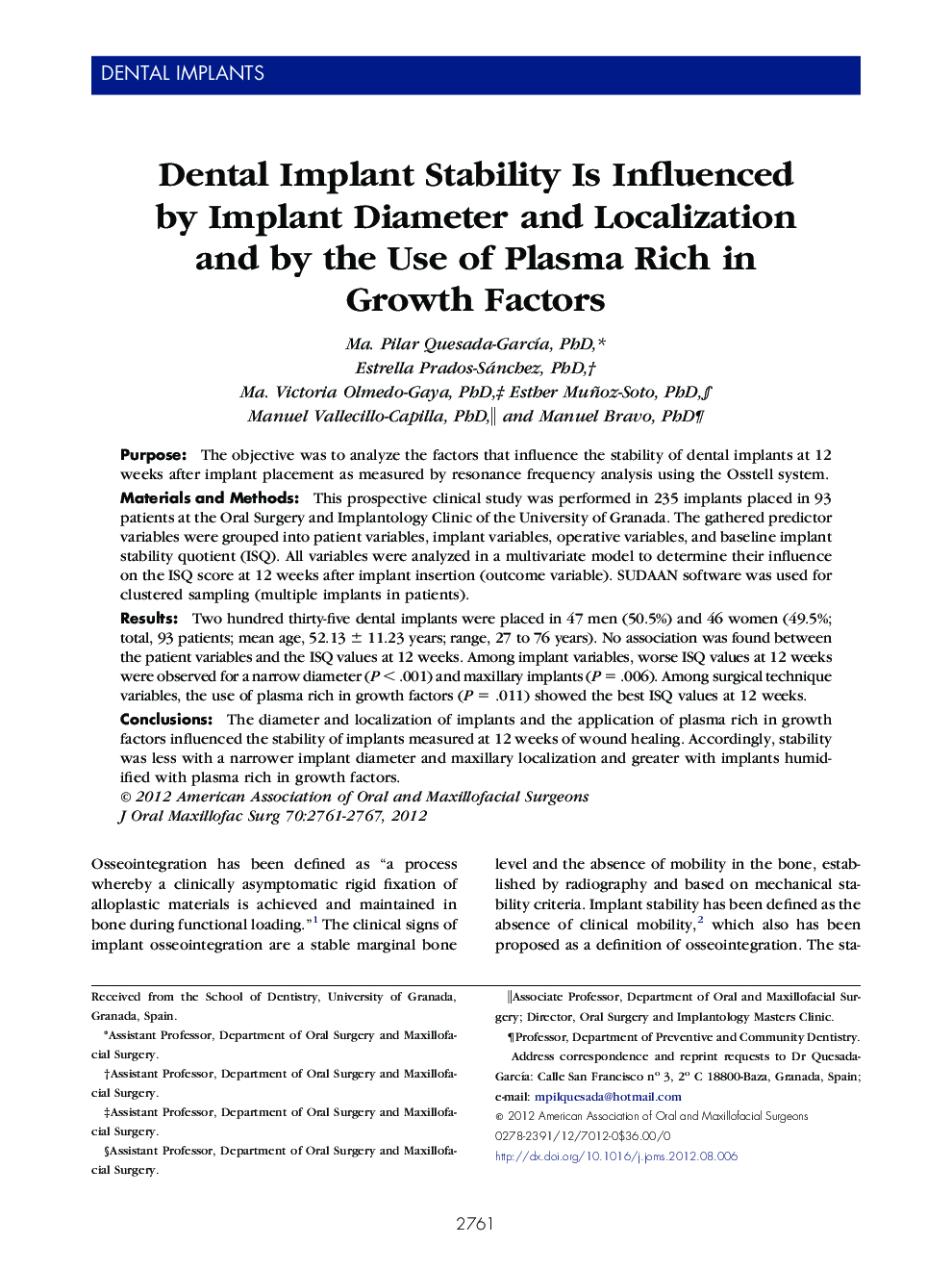| Article ID | Journal | Published Year | Pages | File Type |
|---|---|---|---|---|
| 3158056 | Journal of Oral and Maxillofacial Surgery | 2012 | 7 Pages |
PurposeThe objective was to analyze the factors that influence the stability of dental implants at 12 weeks after implant placement as measured by resonance frequency analysis using the Osstell system.Materials and MethodsThis prospective clinical study was performed in 235 implants placed in 93 patients at the Oral Surgery and Implantology Clinic of the University of Granada. The gathered predictor variables were grouped into patient variables, implant variables, operative variables, and baseline implant stability quotient (ISQ). All variables were analyzed in a multivariate model to determine their influence on the ISQ score at 12 weeks after implant insertion (outcome variable). SUDAAN software was used for clustered sampling (multiple implants in patients).ResultsTwo hundred thirty-five dental implants were placed in 47 men (50.5%) and 46 women (49.5%; total, 93 patients; mean age, 52.13 ± 11.23 years; range, 27 to 76 years). No association was found between the patient variables and the ISQ values at 12 weeks. Among implant variables, worse ISQ values at 12 weeks were observed for a narrow diameter (P < .001) and maxillary implants (P = .006). Among surgical technique variables, the use of plasma rich in growth factors (P = .011) showed the best ISQ values at 12 weeks.ConclusionsThe diameter and localization of implants and the application of plasma rich in growth factors influenced the stability of implants measured at 12 weeks of wound healing. Accordingly, stability was less with a narrower implant diameter and maxillary localization and greater with implants humidified with plasma rich in growth factors.
